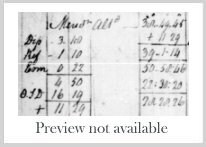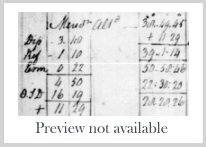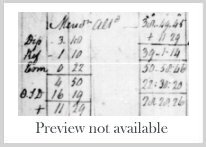
NavList:
A Community Devoted to the Preservation and Practice of Celestial Navigation and Other Methods of Traditional Wayfinding
Re: Kollsman sextant
From: UNK
Date: 2010 Jan 4, 15:54 -0800
BTW, the pictures I uploaded show the Kollsman periscopic sextant with the product improved electronic averager. This is identified by the two large buttons on top of the averager (the clockwork averager has two levers) and the MS electrical connector on the back of the averager itself which is in addition to the electrical connector at the base of the periscope tube which is common on all of these sextants (both with clockwork and electronic averagers) which provides current to illuminate the bubble (or reticle in the pendulous mirror types) and to illuminate the scales. The electronic averager is definatetly more accurate than the clockwork type so look for this when purchasing a Kollsman sextant. The downside of the electronic averager is that you need to supply 28 volts to it so it can't be used, even during the day, without power. (Of course sights can be taken without using the averager in which case no power is needed during the day.) It also uses 150 ma so it eats batteries. The bubble sextants with the clockwork averagers can be used during the day without any electricity and at night it only takes 75 ma to illuminate the bubble and scales. The pendulous mirror types need 65 ma day and night to illuminate the reticle. I have previously posted how to build power supplies to provide 28 volts.
See: https://navlist.net/m2.aspx?i=106215&y=200809
https://navlist.net/m2.aspx?y=200907&i=109272
gl
Gary LaPook wrote:
From: UNK
Date: 2010 Jan 4, 15:54 -0800
BTW, the pictures I uploaded show the Kollsman periscopic sextant with the product improved electronic averager. This is identified by the two large buttons on top of the averager (the clockwork averager has two levers) and the MS electrical connector on the back of the averager itself which is in addition to the electrical connector at the base of the periscope tube which is common on all of these sextants (both with clockwork and electronic averagers) which provides current to illuminate the bubble (or reticle in the pendulous mirror types) and to illuminate the scales. The electronic averager is definatetly more accurate than the clockwork type so look for this when purchasing a Kollsman sextant. The downside of the electronic averager is that you need to supply 28 volts to it so it can't be used, even during the day, without power. (Of course sights can be taken without using the averager in which case no power is needed during the day.) It also uses 150 ma so it eats batteries. The bubble sextants with the clockwork averagers can be used during the day without any electricity and at night it only takes 75 ma to illuminate the bubble and scales. The pendulous mirror types need 65 ma day and night to illuminate the reticle. I have previously posted how to build power supplies to provide 28 volts.
See: https://navlist.net/m2.aspx?i=106215&y=200809
https://navlist.net/m2.aspx?y=200907&i=109272
gl
Gary LaPook wrote:
You have the case for the standard D-1 pericsopic sextant used by the air force.
I am attaching three pics.
gl
NavList@navlist.net wrote:
hello i have a case for a sextant aircraft periscopic it looks old i was wondering when it was from there is a # on it ms28011-3 from burton manufacturing company
------------------------------------------
[Sent anonymously from the message boards]
----------------------------------------------------------------
NavList message boards and member settings: www.navlist.net/NavList
Members may optionally receive posts by email.
To cancel email delivery, send a message to NoMail[at]navlist.net
----------------------------------------------------------------









